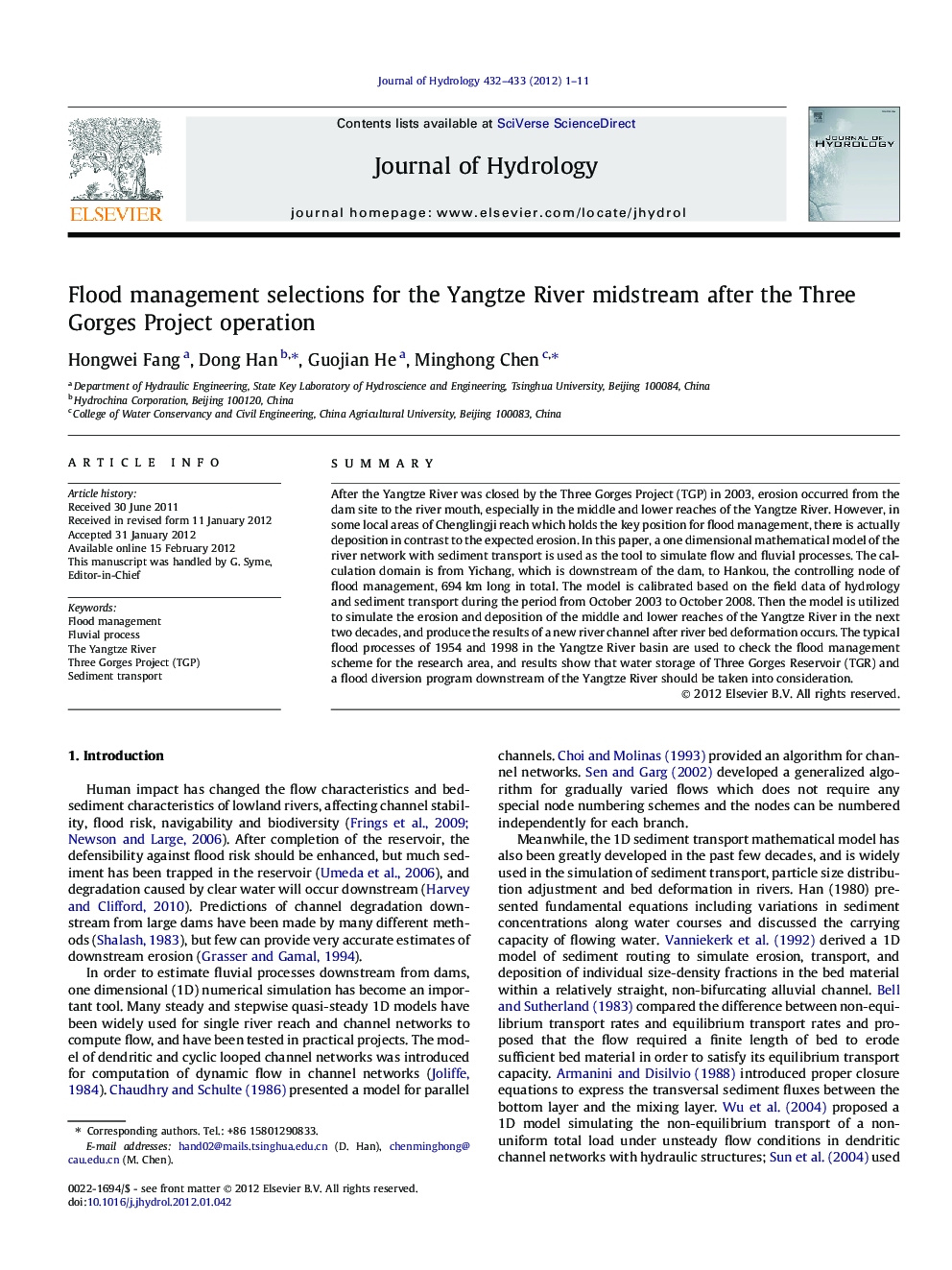| Article ID | Journal | Published Year | Pages | File Type |
|---|---|---|---|---|
| 4577039 | Journal of Hydrology | 2012 | 11 Pages |
SummaryAfter the Yangtze River was closed by the Three Gorges Project (TGP) in 2003, erosion occurred from the dam site to the river mouth, especially in the middle and lower reaches of the Yangtze River. However, in some local areas of Chenglingji reach which holds the key position for flood management, there is actually deposition in contrast to the expected erosion. In this paper, a one dimensional mathematical model of the river network with sediment transport is used as the tool to simulate flow and fluvial processes. The calculation domain is from Yichang, which is downstream of the dam, to Hankou, the controlling node of flood management, 694 km long in total. The model is calibrated based on the field data of hydrology and sediment transport during the period from October 2003 to October 2008. Then the model is utilized to simulate the erosion and deposition of the middle and lower reaches of the Yangtze River in the next two decades, and produce the results of a new river channel after river bed deformation occurs. The typical flood processes of 1954 and 1998 in the Yangtze River basin are used to check the flood management scheme for the research area, and results show that water storage of Three Gorges Reservoir (TGR) and a flood diversion program downstream of the Yangtze River should be taken into consideration.
► Irregular fluvial processes occurred after the Three Gorges Project (TGP) closed the Yangtze River. ► Present flood-control capacity is lower than previously estimated. ► Two different control schemes of TGP are recommended to remedy the possibility of flood.
